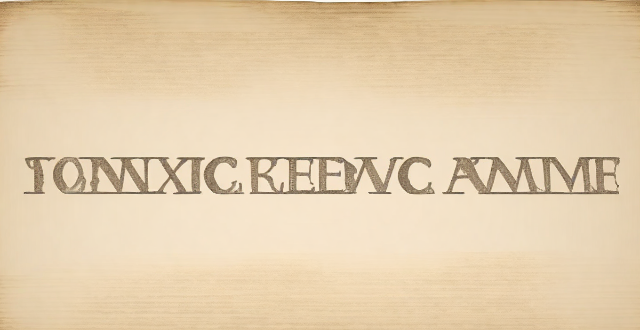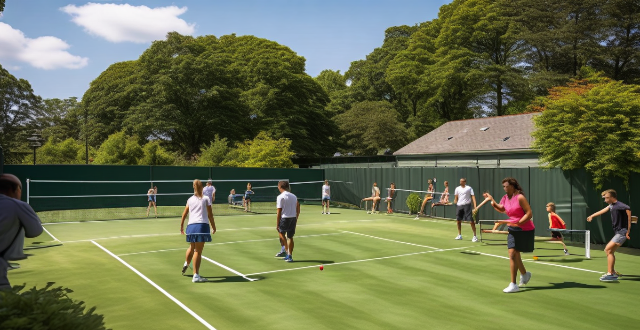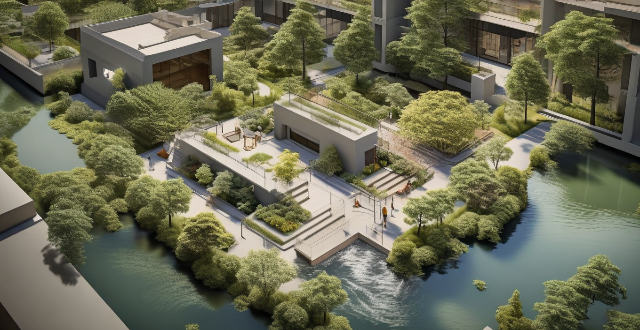Feedback Camp

What should I expect from a week-long tennis training camp ?
A week-long tennis training camp is designed to enhance your skills, provide intensive training, and offer opportunities for social interaction. You can expect to see improvements in stroke technique, footwork & movement, strategy & tactics, and physical fitness. The camp will have a structured schedule with morning practices, afternoon matches, and evening reviews. Experienced coaches will provide personalized feedback and motivational support. You will also have the chance to meet fellow tennis enthusiasts and learn from peers. Some camps may include lectures on nutrition and sports psychology, as well as recreational outings. By the end of the camp, you should receive a comprehensive assessment and actionable feedback to continue developing your game. Overall, a tennis training camp offers an immersive experience aimed at refining your skills, gaining confidence, and becoming a more well-rounded tennis player.

Can I get a personal coach at a tennis training camp ?
Tennis training camps offer various services, including group lessons, individual lessons, and personalized coaching. Having a personal coach at a tennis training camp can provide you with many benefits, such as personalized attention, customized training plans, accelerated learning, and motivation. To find a suitable coach, research the camp, contact them directly, ask for recommendations, schedule a meeting, and consider the cost. With the right coach, you can take your game to the next level and achieve your tennis goals.

What equipment do I need to bring to a tennis training camp ?
Attending a tennis training camp requires essential tennis gear, protective accessories, and personal items. Pack primary and spare racquets, practice and new balls, athletic clothing, tennis shoes, sun protection, and water bottles. Consider ankle braces, knee supports, and elbow bands for injury prevention. Don't forget casual clothes, toiletries, a backpack, reading material, and devices with chargers for off-court activities. Check with the camp organizers for specific requirements to ensure a complete packing list.

What are the benefits of attending a high-performance tennis training camp ?
Attending a high-performance tennis training camp can significantly improve players' skills and overall performance. These specialized programs offer a range of benefits, including technical skill enhancement, physical conditioning, mental toughness development, exposure to high-level competition, networking opportunities, personalized instruction, and off-court education. With a focus on stroke technique, footwork drills, strategy development, strength and cardiovascular training, flexibility, mental preparation, and stress management, these camps are designed to foster a competitive mindset and prepare players for the rigors of professional tennis. Additionally, the chance to play against strong opponents, receive feedback from experienced coaches, and connect with peers and potential mentors further enhances the value of these camps. Personalized training plans, goal setting workshops, and video analysis also contribute to the comprehensive nature of the training. Beyond physical and technical improvement, camps provide education on nutrition, sports psychology, and equipment knowledge, ensuring that participants are well-equipped both on and off the court. Overall, high-performance tennis training camps offer a holistic approach to tennis development, making them an invaluable resource for players looking to elevate their game.

What kind of physical conditioning is included in a tennis training camp program ?
Tennis training camps typically include exercises to improve cardiovascular endurance, strength, agility, and flexibility.

How can I find a tennis training camp near me ?
Finding a tennis training camp near you can be a great way to improve your skills and enjoy the sport. Here are some steps to help you find a suitable camp: 1. Determine Your Location: First, determine the location where you want to attend the camp. This could be your current city or a nearby town. 2. Use Online Search Engines: You can use online search engines like Google to search for tennis training camps in your area. Simply type in "tennis training camp [your location]" and see what results come up. 3. Check with Local Tennis Clubs: Local tennis clubs are often a good source of information about upcoming training camps. Check their websites or contact them directly to ask about any upcoming camps they may be hosting. 4. Contact Professional Tennis Coaches: Professional tennis coaches may also offer training camps or know of other camps in the area. Contact coaches in your area to see if they have any recommendations. 5. Look for Advertisements and Posters: Keep an eye out for advertisements and posters for tennis training camps in your local area. These may be posted at tennis courts, community centers, or other public places. 6. Ask Other Tennis Players: Finally, ask other tennis players in your area if they know of any upcoming training camps. They may have attended one before or heard about one through word-of-mouth. By following these steps, you should be able to find a suitable tennis training camp near you. Good luck!

How important is rest and recovery during a tennis training camp ?
The text discusses the significance of rest and recovery in a tennis training camp. It outlines six key reasons why taking time to rest and recover is crucial: preventing overuse injuries, enhancing performance, promoting muscle growth and repair, improving immune function, enhancing learning and adaptation, and maintaining motivation and enjoyment. Incorporating adequate rest periods into the training schedule can ensure that athletes stay healthy, perform better, and derive maximum benefit from the camp experience.

Are there any age restrictions for attending a tennis training camp ?
Attending a tennis training camp can have age restrictions based on physical maturity, safety concerns, and skill level. Typically, the minimum age requirement is between 8-10 years old, but some camps may accept younger children with parental supervision or permission. There are usually no maximum age limits, as adult players often attend training camps to improve their skills or prepare for competitions. Attending a tennis training camp can provide numerous benefits, including improved skill level, increased fitness, and networking opportunities.

Can I get a scholarship to attend a prestigious tennis training camp ?
Attending a prestigious tennis training camp can be an excellent opportunity for aspiring athletes to improve their skills and gain exposure to top-level coaching. However, the cost of such camps can be prohibitive for many players. In this article, we will explore whether it is possible to obtain a scholarship to attend a prestigious tennis training camp. Scholarships are financial aid awards that help students pay for college or university tuition fees, books, and other related expenses. They are typically awarded based on academic merit, financial need, or specific talents, such as athletic ability. There are various types of scholarships available, including need-based scholarships, merit-based scholarships, and athletic scholarships. To be eligible for a tennis training camp scholarship, you must demonstrate exceptional athletic ability in tennis. This may include having a high ranking in your age group, winning tournaments, or receiving recognition from coaches or scouts. Most prestigious tennis training camps also require applicants to have a certain level of academic achievement. The first step in applying for a tennis training camp scholarship is to research the available opportunities. This can involve searching online, contacting tennis organizations, or speaking with coaches and mentors in the sport. Once you have identified potential scholarships, you will need to prepare your application materials, which may include transcripts, letters of recommendation, essays or personal statements, and an athletic resume. Obtaining a scholarship to attend a prestigious tennis training camp is certainly possible but requires careful planning and preparation. By understanding the eligibility criteria, researching available scholarships, and preparing a strong application package, you can increase your chances of securing funding for your tennis training goals.

How do I choose a tennis training camp that fits my skill level ?
Choosing a tennis training camp that fits your skill level can significantly improve your game. Here are some tips on how to select the right camp: 1. Assess your current skill level by considering your experience, strengths and weaknesses, and fitness level. 2. Research different camps that offer programs specifically designed for your skill level using online directories, social media groups, and reviews from previous attendees. 3. Check the coaches' qualifications and experience, including their credentials, coaching philosophy, and track record of working with players at your skill level. 4. Consider the quality of the camp's facilities and amenities, such as well-maintained courts, access to equipment, and onsite amenities like locker rooms and dining areas. 5. Evaluate the camp's reputation and success rate by reading reviews, asking for referrals, and contacting the camp directly to learn more about their success stories.

How many hours per day will I be playing tennis at a training camp ?
Attending a tennis training camp can significantly improve your skills and endurance, with daily schedules typically involving 3-6 hours of intensive play. The day is structured around morning technique and strategy sessions, afternoon physical drills, and evening matches or scrimmages to apply learned concepts. Key points include the importance of adequate rest and recovery to avoid burnout and injuries. A typical day might start with a warm-up followed by technical and tactical training, then move to fitness exercises and high-intensity drills, finishing with match play and a cool down. Evening activities may include video analysis and lectures on various topics. Personal commitment levels affect the duration and intensity of training, with beginners starting with shorter sessions and advanced players engaging in more extended, intense workouts. Overall, the camp experience is designed to challenge participants while ensuring a balanced approach to their development.

How do I know if a tennis training camp offers quality coaching ?
When considering enrollment in a tennis training camp, it is crucial to assess the quality of coaching by examining credentials and experience of coaches, coach-to-player ratios, training methods and philosophy, reputation and reviews, facilities and support services, and personalized attention and feedback.

What role does audience feedback play in shaping future live streaming sessions ?
The article explores the crucial role of audience feedback in shaping future live streaming sessions. It discusses the importance of feedback in improving content relevance, enhancing interactivity, technical optimization, and building a community. The article also suggests strategies for implementing feedback collection, such as surveys, live chat analysis, social media engagement, and email subscriptions. Additionally, it emphasizes the need for data-driven decisions, transparency with changes, and an iterative approach to continuously improve live streaming sessions.

What kind of customer feedback has been received so far for the new product ?
The new product has received mostly positive feedback, withThe new product has received mostly positive feedback, with user-friendly interface, speed However, there have been concerns about compatibility issues, software bugs, and pricing. Some customers also mentioned the need for additional features and improvements in customer support services. Overall, the feedback will be used to make necessary improvements and meet customer expectations.

How often should I attend a tennis training camp to improve my game significantly ?
How often you should attend a tennis training camp to improve significantly depends on your current level and experience, goals, quality of training, personal commitments, physical recovery needs, and budget. Finding a balance that works for you is key to maximizing your chances of improvement.

How much does it typically cost to attend a tennis training camp ?
Attending a tennis training camp can significantly vary in cost based on duration, level of instruction, location, and additional services. The main expenses include camp fees, accommodation and meals, transportation, equipment, and optional amenities like private lessons. To manage costs, research different camps, look for early bird discounts, share expenses with a companion, and pack appropriately to avoid extra purchases.

Do tennis training camps provide accommodation and meals for participants ?
Tennis training camps offer a variety of services, including accommodations and meals. Residential camps typically provide dormitory-style accommodations with shared bathrooms and three meals per day in a cafeteria or dining hall on campus. Non-residential camps do not provide accommodations or meals for participants, so participants must arrange their own lodging and food options.

What is the daily schedule like at a typical tennis training camp ?
A tennis training camp's daily schedule focuses on skill enhancement, fitness, and mental preparation through activities like morning practice, theory sessions, match play, and fitness training. The day starts early with wake-up calls around 6:00 AM and ends with an early bedtime to ensure rest for the next day's intensive training. Leisure activities are included to promote relaxation and social interaction among participants.

Are tennis training camps effective for children and teenagers ?
Tennis training camps can be an effective way for children and teenagers to improve their skills and develop a love for the sport, depending on factors such as quality of instruction, level of commitment, and overall environment. Benefits include skill development, learning new techniques, building confidence, and socializing with other young players.

Can you recommend any international tennis training camps for advanced players ?
This text provides a list of international tennis training camps for advanced players, including their locations and brief descriptions of the services they offer. The camps are located in various countries such as France, the USA, Spain, the Czech Republic, Germany, the UK, and Australia. Each camp offers specialized training for advanced players, with excellent facilities and experienced coaches to help improve their game.

How can companies improve their products based on customer reviews ?
Companies can improve their products by listening to customer reviews, addressing negative feedback, encouraging constructive criticism, implementing continuous improvement, and leveraging positive reviews. This involves analyzing feedback using NLP tools, categorizing issues, prioritizing actions, investigating complaints, implementing fixes, communicating changes, creating a supportive environment for honest feedback, establishing a feedback loop, iterating rapidly, monitoring progress, highlighting strengths, celebrating successes, and maintaining quality. By doing so, companies can enhance their offerings and stay relevant in the market.

How do I evaluate the cultural diversity and inclusion efforts of a school ?
Evaluating the cultural diversity and inclusion efforts of a school involves examining various aspects such as administrative policies, curriculum, student experience, community engagement, and feedback mechanisms. Key factors to consider include the presence of a clear diversity statement in policies, fair hiring and promotion practices, multicultural curriculum, teacher training, diverse student organizations, support services for diverse students, collaboration with local communities, family involvement programs, regular surveys and feedback mechanisms, and continuous improvement plans based on feedback. By assessing these elements, one can gain insight into the effectiveness of a school's efforts to promote cultural diversity and inclusion.

How do virtual classrooms compare to traditional classrooms in terms of learning effectiveness ?
The text presents a comparative analysis of virtual classrooms and traditional classrooms in terms of learning effectiveness. The comparison is structured around several aspects: 1. **Learning Environment**: Traditional classrooms offer physical interaction but limited resources, while virtual classrooms provide flexibility and access to diverse resources. 2. **Teaching Methods**: Direct instruction and group work are emphasized in traditional settings, whereas interactive tools and personalized learning are characteristic of virtual environments. 3. **Student Participation**: Active participation and social dynamics are key in traditional classrooms, while virtual settings allow for asynchronous participation and cater to introverted students. 4. **Assessment and Feedback**: Immediate feedback and formative assessment are strengths of traditional classrooms, while automated feedback and summative assessment are advantages of virtual classrooms. 5. **Conclusion**: The choice between traditional and virtual classrooms depends on various factors, and an ideal approach could be a blended method that combines the best elements of both.

How can data analytics be used to measure teacher effectiveness and performance ?
Data analytics can be a powerful tool for measuring teacher effectiveness and performance. It allows administrators, educators, and policymakers to gain insights into various aspects of teaching and learning, leading to more informed decision-making and improvements in educational outcomes. Here's how data analytics can be leveraged to assess teacher performance: 1. Identifying Key Performance Indicators (KPIs): To begin with, it is essential to identify the key performance indicators that will be used to measure teacher effectiveness. These KPIs may include student achievement scores on standardized tests, classroom observations and evaluations, student engagement and participation levels, parent and student feedback surveys, and teacher attendance and professional development activities. 2. Collecting and Analyzing Data: Once the KPIs are established, data needs to be collected from various sources, such as student records, observation reports, and survey responses. This data should then be analyzed using statistical methods and data visualization techniques to identify patterns, trends, and correlations. 3. Interpreting Results and Making Informed Decisions: After analyzing the data, it is crucial to interpret the results and make informed decisions based on the findings. This process involves considering contextual factors, such as school resources, student demographics, and external influences, when evaluating teacher performance. 4. Continuous Monitoring and Feedback Loop: Finally, it is essential to establish a continuous monitoring system and feedback loop to ensure ongoing improvement in teacher effectiveness. This involves regularly collecting and analyzing data, providing constructive feedback to teachers, and implementing changes based on the insights gained from the data.

How can a coach improve their leadership skills in sports ?
To improve their leadership skills in sports, coaches should develop emotional intelligence, build trust and respect with athletes, set clear goals and expectations, provide constructive feedback, encourage teamwork and collaboration, and continuously learn and grow. These strategies can help coaches guide their teams towards success by fostering a positive team culture, motivating athletes, and promoting effective communication and collaboration within the team.

How can I ensure equal participation from all members in a study group ?
Ensuring equal participation in a study group is crucial for its success. Here's a summary of strategies to encourage active involvement from all members: 1. **Set Clear Expectations**: Establish guidelines for attendance, engagement, and task completion at the start. 2. **Assign Roles and Responsibilities**: Give each member a specific job to ensure they have an active role. 3. **Encourage Open Communication**: Create a safe space where everyone can share their thoughts without interruptions. 4. **Use Icebreakers and Group Activities**: These help build rapport and encourage shy members to participate. 5. **Provide Feedback and Recognition**: Regularly acknowledge contributions and offer constructive feedback to foster improvement. By implementing these strategies, you can create an inclusive environment that values each member's input, ensuring a productive and enriching study group experience for all.

How can social media be used to spread climate awareness ?
Social media can be a powerful tool for raising awareness about climate change and encouraging action. Here's how: - **Educational Content**: Share informational posts, host webinars, and invite experts to discuss climate change. - **Inspirational Stories**: Highlight success stories and profile environmental champions. - **Engagement Strategies**: Start challenges, interactive quizzes, and polls to involve followers in climate actions. - **Visual Impact**: Use compelling images, videos, and data visualization to illustrate the consequences of climate change. - **Collaboration**: Partner with organizations and influencers to co-create content and amplify messages. - **Feedback Loop**: Encourage interaction, conduct surveys, and tailor content based on audience feedback. - **Regular Updates**: Provide timely updates and create a dedicated hashtag for your climate awareness campaign. - **Positive Reinforcement**: Recognize participation and reward those who engage in climate initiatives.

What is the best time of year to go on a camping adventure ?
Camping is a wonderful way to connect with nature and enjoy the great outdoors. However, the experience can vary greatly depending on the time of year you choose to go. Here are some factors to consider when deciding on the best time of year for your camping adventure: - Weather Conditions: Spring is a beautiful time to camp, as the flowers are blooming and the temperatures are mild. Summer is the most popular season for camping, as the weather is typically warm and sunny. Fall offers cooler temperatures and vibrant foliage, making it a great time to camp. Winter camping can be a unique and peaceful experience, but it requires proper gear and preparation for cold temperatures and possible snow. - Crowds and Availability: If you want to avoid crowds, plan your trip during the week instead of on weekends. Be aware that national holidays like Memorial Day, Independence Day, and Labor Day tend to draw large crowds to popular campgrounds. Campgrounds can get busy during spring break and summer vacation periods when families take advantage of their children's time off from school. - Activities and Wildlife: Different seasons offer different opportunities for outdoor activities and wildlife viewing. Consider what you hope to do and see while camping: hiking, fishing, wildlife viewing, or water sports.

What are the most challenging mountain biking trails near me ?
The article provides a summary of the most challenging mountain biking trails located near the reader's location. The trails are divided into three regions: The Rockies, The Pacific Northwest, and The Appalachian Mountains. Each region offers several options for advanced riders looking for a challenge, with descriptions of the trail's difficulty level, location, and features. The trails mentioned include Keystone Resort, Crested Butte Mountain Resort, Whistler Mountain Bike Park, Duthie Hill Mountain Bike Park, Post Canyon Trail, Government Camp/Mount Hood National Forest, Tsali Recreation Area, Virginia Creeper Trail, and Pinhoti Trail System. The article concludes by encouraging readers to explore these challenging trails and test their skills.